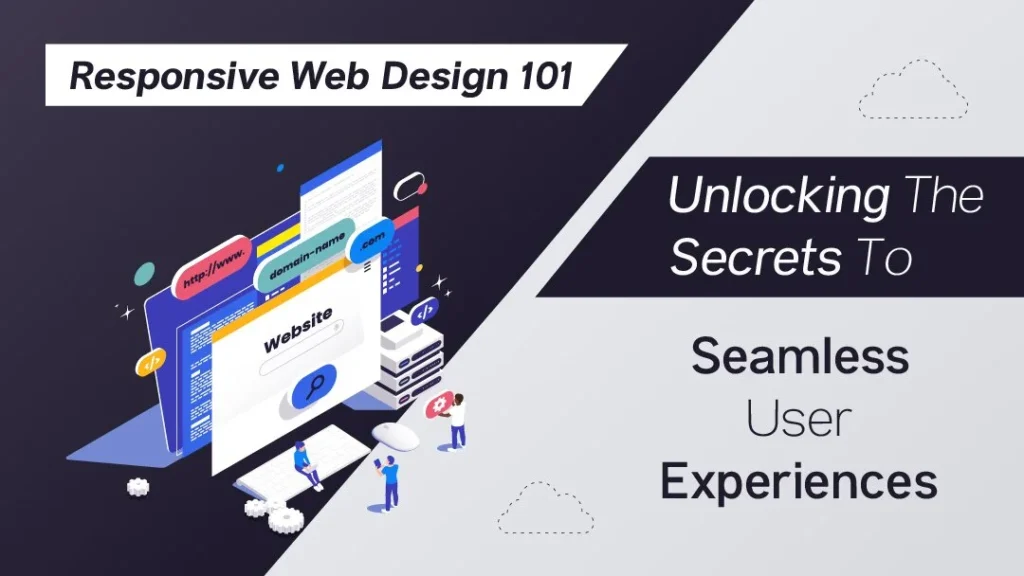- Admin
- Last Update on
Responsive Web Design 101: Unlocking the Secrets to Seamless User Experiences
Your website serves as the first point of contact with customers looking for your services in a digital-first world. Imagine what happens when a visitor from Houston opens his phone and gets on the website that he is interested in learning more about the company’s product offerings. He starts getting disheartened since everything appears so small that it is hard for him to read anything, with buttons being out of reach while pictures fail to load completely. Fed up with wasting time trying to navigate through such an unappealing site he decides to go away for good, missing out on possible benefits that could have accrued towards our business through him being a client. This shows that Responsive Web Design (RWD) is not something you can ignore; it’s a necessity.

What is Responsive Web Design?
Responsive Web Design (RWD) refers to a design approach that makes your website look good and work well on all devices such as desktop computers, tablets, and smartphones. Instead of building different versions for every kind of device people might use, responsive design uses adaptable grids and fluid layouts with media queries to suit any screen size.
Why Does Responsive Design Matter?
- Enhanced User Experience: Your site can be likened to a digital storefront; hence a responsive design will ensure that all your visitors have similar browsing experiences across all devices. It keeps users active on your website which leads to lower bounce rates and higher possibilities of conversion.
- Improves Search Engine Optimization Rankings: Search engines such as Google prefer websites that are mobile-friendly. In addition to this, responsive design enhances usability thereby improving search engine optimization performance and resulting in increased organic traffic to your site.
- Helps You Save Time And Money: It is both time-consuming as well as expensive to maintain different versions of a website for various devices. However, with responsive design, there’s only one site that will fit all people making updates and maintenance easier.
- Future-Proofs Your Site: New devices and screen sizes keep coming up in the digital world hence changing constantly. Therefore when using responsive design it helps ensure that your site is still important and accessible regardless of upcoming technology advancements.
Best Practices for Responsive Web Design
- The very first thing you should consider is the design for mobile devices: begin by designing for the smallest screen size and gradually grow from there to ensure that you are giving priority to all important parts of your site for those who access it using phones.
- Flexible grids and images: make fluid grid systems that can change according to different screens’ dimensions; images, too, should have a scalability feature so as not to slow down their loading time or cut off parts of it.
- Cross-device testing: consistently testing your website on different gadgets and browsers since what works on one display might fail on another helps maintain a cohesive user experience.
- Make Navigation Easy: a crowded menu bar may be somehow confusing especially when viewed through smaller screens; therefore, one needs to ignore extra items within menus thereby making them simpler thus aiding seamless navigation.
Conclusion
Responsive web design is no longer optional—it’s the key to staying ahead in Houston’s competitive digital landscape. At AAEIMAA Digital, we specialize in creating responsive websites that not only look great but also drive results.
Ready to elevate your digital presence?